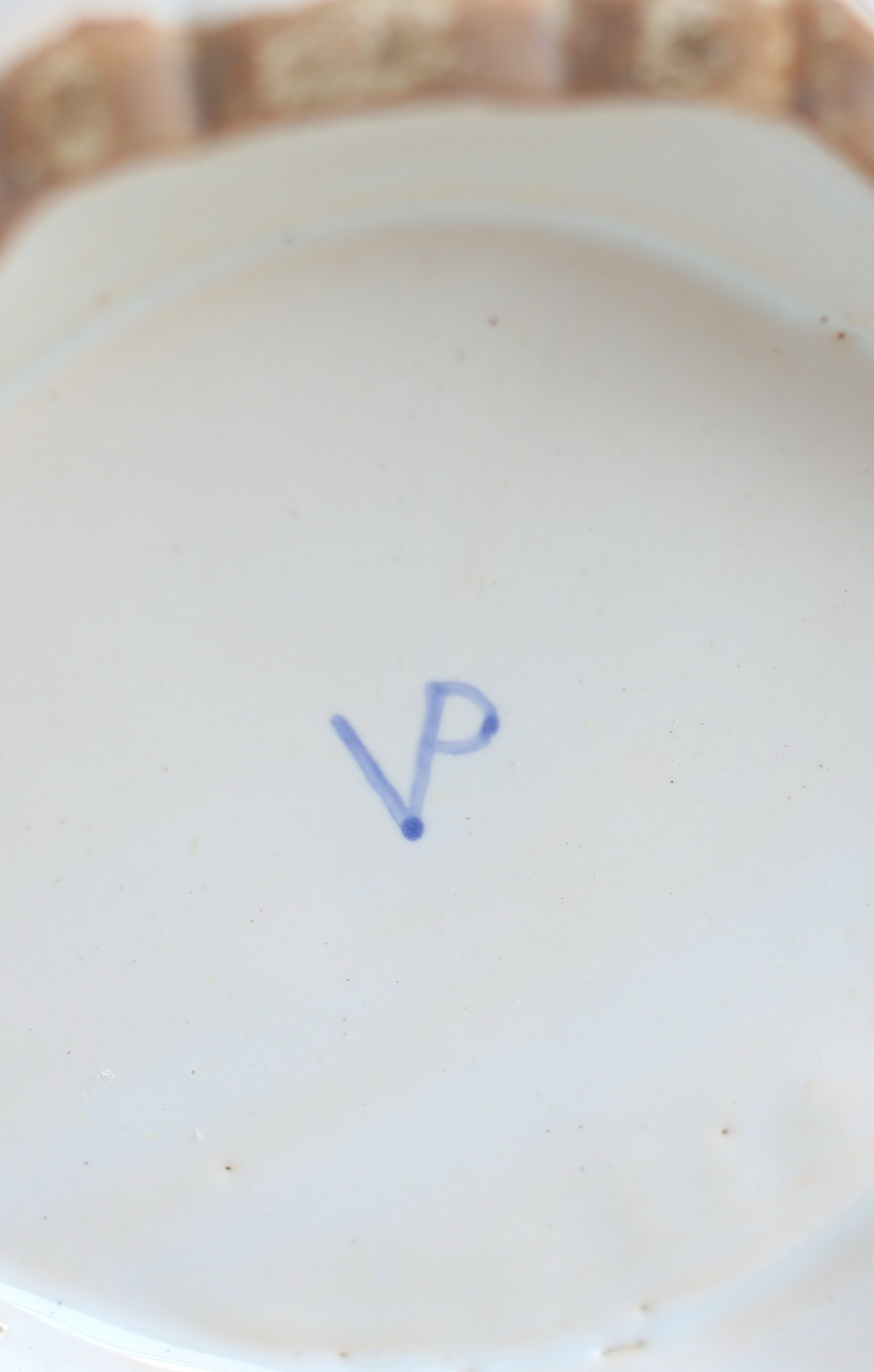 Image 1 of 11
Image 1 of 11

 Image 2 of 11
Image 2 of 11

 Image 3 of 11
Image 3 of 11

 Image 4 of 11
Image 4 of 11

 Image 5 of 11
Image 5 of 11

 Image 6 of 11
Image 6 of 11

 Image 7 of 11
Image 7 of 11

 Image 8 of 11
Image 8 of 11

 Image 9 of 11
Image 9 of 11

 Image 10 of 11
Image 10 of 11

 Image 11 of 11
Image 11 of 11












18th Century Bird Tureen
Surreal late 18th, early 19th century hand painted bird terrine adorned with pastoral scenes of the French countryside, buzzing insects, & a trompe l’oeil bird perched in it’s nest—all rendered in beautiful shades of bright yellow, feathered lavender, and rich raspberry. Emerging from the body of the terrine are two incredible trompe l’oeil lavender bird head handles with yellow beaks that are flanked by painted feathered details suggesting that the birds could take flight at any moment.
Condition: Excellent, wear consistent with age, see photos for condition.
Dimensions: 15 1/4” L x 8” W x 9” H
The incredible handles are yellow beaked birds emerging from the body of the terrine. An incredible find beyond compare, a museum quality piece
About Veuve Perrin
Born in Lyon, the daughter of a silk master settled in Marseille in 1720, Pierrette Candelot married Claude Perrin in 1736, a descendant of a family of potters from Nevers. In 1748 after her husband died, she inherited his small factory, which was experiencing great financial difficulty. A talented entrepreneur, she renamed the business Veuve Perrin, or the Widow Perrin, & the factory flourished under her leadership from the 1770s until her death in 1794. The French Revolution proved to be disastrous for all the pottery factories in Marseille and consequently Veuve Perrin closed its doors in 1803.
About French Faience
Faience, or tin-glazed and enameled earthenware, first emerged in France during the sixteenth century, reaching widespread usage among elite patrons during the seventeenth and early eighteenth centuries, prior to the establishment of soft-paste porcelain factories. Although characterized as more provincial in style than porcelain, French faience was used at the court of Louis XIV as part of elaborate meals and displays, with large-scale vessels incorporated into the Baroque garden designs of Versailles. Earlier examples of French faience attest to the strong influence of maiolica artists from Italy. Later works demonstrate the ways in which cities such as Nevers, Rouen, Lyon, Moustiers, and Marseille developed innovative vessel shapes and decorative motifs prized among collectors throughout Europe
Surreal late 18th, early 19th century hand painted bird terrine adorned with pastoral scenes of the French countryside, buzzing insects, & a trompe l’oeil bird perched in it’s nest—all rendered in beautiful shades of bright yellow, feathered lavender, and rich raspberry. Emerging from the body of the terrine are two incredible trompe l’oeil lavender bird head handles with yellow beaks that are flanked by painted feathered details suggesting that the birds could take flight at any moment.
Condition: Excellent, wear consistent with age, see photos for condition.
Dimensions: 15 1/4” L x 8” W x 9” H
The incredible handles are yellow beaked birds emerging from the body of the terrine. An incredible find beyond compare, a museum quality piece
About Veuve Perrin
Born in Lyon, the daughter of a silk master settled in Marseille in 1720, Pierrette Candelot married Claude Perrin in 1736, a descendant of a family of potters from Nevers. In 1748 after her husband died, she inherited his small factory, which was experiencing great financial difficulty. A talented entrepreneur, she renamed the business Veuve Perrin, or the Widow Perrin, & the factory flourished under her leadership from the 1770s until her death in 1794. The French Revolution proved to be disastrous for all the pottery factories in Marseille and consequently Veuve Perrin closed its doors in 1803.
About French Faience
Faience, or tin-glazed and enameled earthenware, first emerged in France during the sixteenth century, reaching widespread usage among elite patrons during the seventeenth and early eighteenth centuries, prior to the establishment of soft-paste porcelain factories. Although characterized as more provincial in style than porcelain, French faience was used at the court of Louis XIV as part of elaborate meals and displays, with large-scale vessels incorporated into the Baroque garden designs of Versailles. Earlier examples of French faience attest to the strong influence of maiolica artists from Italy. Later works demonstrate the ways in which cities such as Nevers, Rouen, Lyon, Moustiers, and Marseille developed innovative vessel shapes and decorative motifs prized among collectors throughout Europe
